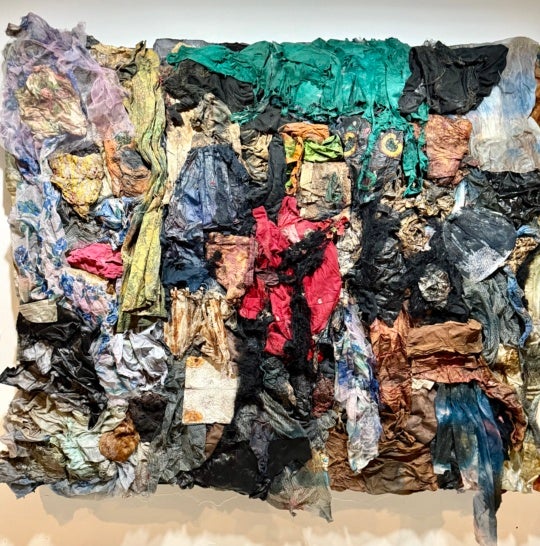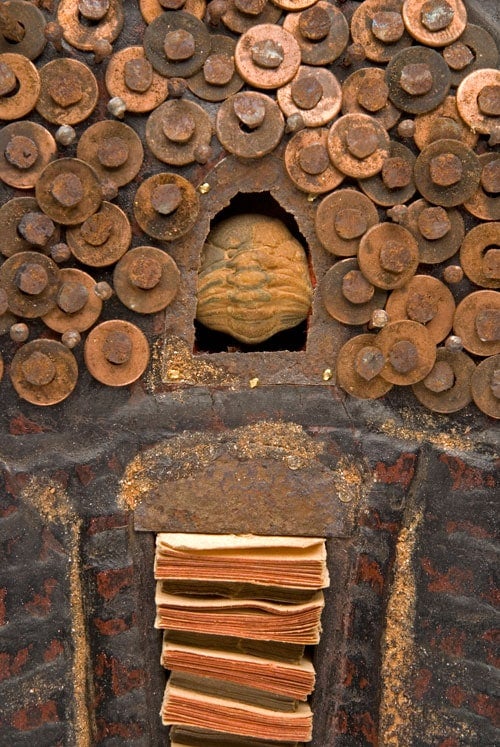
Standing in Jackson Fine Art, looking at Masao Yamamoto’s exhibition “Kawa=Flow,” you might feel as thought you’ve been transported back in time and are actually looking at woodblock prints. For if Yamamoto’s extraordinarily intimate silver gelatin prints are anything, they are sensual, and even at their most mundane, woodblock prints were imbued with a sense of life that was palpable.
Even Yamamoto’s subject matter makes a subtle nod to the broader history of woodblock prints. Both Utamaro and Hiroshige, master ukiyo-e artists, made numerous prints of owls, and Yamamoto’s extraordinary Kawa=Flow 1637, literally a study in whiteness and form, and Kawa=Flow 1638, a more direct animal portrait, pay tribute to this lineage.

At times Yamamoto draws motifs across multiple series. His use of chiaroscuro permeates both Nakazora and Box of Ku. Consider, for example, Nakazora #905, a delicate nude emerging from the darkness, and the more allegorical Nakazora #1151, where his subject is more illuminated, brighter, almost more like a medical, anatomical doll – but for the butterflies – one that appears real, the other apparently painted or tattooed – on her back.
Rooted in both painting and printmaking, Yamamoto’s photography is a study in patience, delicacy and observation. His work is hyperfocused — not literally, meaning that it is not driven by an overattention to depicting the real — but figuratively, by representing the intimacies of the image, the small elements of pictorial space that truly matter.

San Francisco artist John Chiara is all about the expansive. His works depict figurative, literal, social, and emotional spaces that feel as if they were always already abandoned—at least in Mississippi. One challenge that Chiara’s works encounter is that images of the vernacular South can all too often be categorized as rote or repetitive, or as reinforcing stereotypes of Southern life. This is not the case here. What makes Chiara’s “Mississippi” so alluring is its vast emptiness and its ability to capture a sense of foreboding. This could not be more evident than in Highway 1 at Moon Lake Versions 1 and 2, or in County Line at North New Africa. In County Line at New North Africa, in particular, the desolation is almost palpable, with the deep red capturing the heart of the Mississippi soil. In Moon Lake, on Highway 1, the water must feel unimaginable.
The fact that these are unique prints, made with a hand-built camera obscura, only reinforces the excitement. Imagine Chiara sitting alongside a Southern road, a bizarre contraption attached to a trailer, studying the landscape. It is as if Mathew Brady forgot to advise one of his stringers to go home. What truly makes Chiara’s images special is their scale. To work on this magnitude in this manner seems like and exercise in risk, yet Chiara appreciates that the flaws and foibles of his technique add value to his images. He crawls inside his camera through a light-tight tube, attaches paper to the rear of his oversize camera, focuses, and emerges again before exposing the image. He understands that the camera can be unpredictable, but he embraces the possibilities.

These photographs feel like the true embodiment of the American spirit that Bruce Springsteen sang about in the mid-1970s. In “Spirit in the Night” Springsteen rhymed: “Billy slammed on his coaster brakes/And said, “Anybody wanna go on up to Greasy Lake?/It’s about a mile down on the dark side of Route 88/I got a bottle of rosé so let’s try it…” In Chiara’s “Mississippi” series, it feels as if the artist is down on the dark side of Route 88, except he’s a lot further down than a mile. He’s down in the depths of the American psyche, down in the heart of the country, down where myths and meanings are constructed, pulling a camera through it all. Every image tells a single story in its own unique way, down in the state they call “em, eye, crooked letter, crooked letter, eye, crooked letter, crooked letter, eye, humpback, humpback, eye.”
Both artists exhibitions are on view through October 31.
Brett Levine is an independent curator, writer, and editor based in Birmingham.




